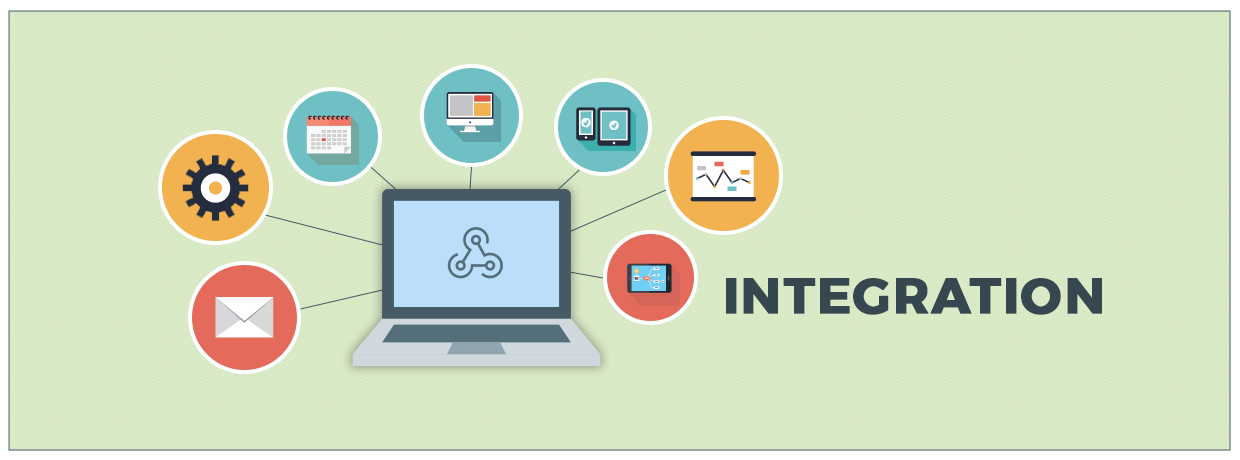A business process management system that doesn’t easily integrate with your other systems is arrogant, short-sighted, and not worth your time or money.
In today’s business world, collaboration is key, not only for humans, but also for systems. No organization can run on a single software suite and no suite has a workflow tool sophisticated enough to handle all of your needs. Powerful enterprise BPM integration should absolutely be a strength of any BPM system you evaluate.
Business Process Integration (BPI) involves combining different processes into a single cohesive system. This integration helps reduce costs, enhance customer service, and enables businesses to adapt swiftly to changing market conditions.
Types of Process Integration
Modern BPM systems should come with integration capabilities that enable systems to share tasks seamlessly. It should support the following types of integration linked to data:
- Events happening in another system that trigger a new process. For example, when a purchase request gets approved in your workflow management system, you might want to start a purchase request order in your ERP.
- Pull capability, meaning drawing data from a third-party system into your business process so that BPM users can use that data and make sense of it.
- Push capability, meaning sending the data to a third-party system when the data reaches a particular step (e.g. manager approval).
Data-linked integration is part and parcel of system-level integration, which is what you should look for in a good business process management system. Your business processes gain more traction and interoperability when a BPM offers hassle-free integration with other platforms such as G Suite, Office 365, and other SaaS and cloud services.

Is It Possible for BPMS to Support All-inclusive Integration Capabilities?
By design, every business process management system comes with some kind of integration, although the range of integration might vary from one product to another. However, with the quick pace of new applications being introduced in the enterprise application ecosystem, it’s not possible for BPM vendors to include default integration with all of newly-introduced applications. Any software can only support n number of integration capabilities.
If it needs to integrate with other products without additional connectors, enterprise BPM system integration can employ custom integration to collaborate with other systems using Application Programming Interface (API). APIs allow two platforms to share and access data, functions, or features between them. This is also helpful for modern BPMS to integrate with an enterprise’s legacy systems that don’t come with out-of-the-box integration capabilities.
One common solution is using the Zapier platform to create connections with other applications. Zapier is an integration middleware vendor that works as a hub-and-spokes point that enables software or platforms to access data when they cannot connect directly.
Integration is a very special beast. It isn’t a one-size-fits-all solution because it varies from one enterprise to another, the nature of the business processes, and the application portfolio. Your enterprise should pick a BPM software that offers the most comprehensive range of integration, and the one that best suits your organizational end goals.
BPM Integration Versus Business Process Integration
Integration in the context of a BPM platform is a feature that allows the software to merge data across other systems. But it’s easy to see why BPM integration is often confused as a concept with business process integration (BPI). Both sound alike, but Business Process Integration is a distinct practice in itself that occurs when multiple business processes across multiple verticals work together to meet defined enterprise goals.
For instance, when a e-commerce vendor receives a customer order for a smartphone listed on its website, it turns around to the phone manufacturer to check for availability or information on standard shipment time. In such scenarios, BPMs running across multiple channels integrate together for a symbiotic effect of delivering an end goal.
Companies can use enterprise BPM system integration to achieve larger business process integration goals. Modern business automation software enables teams to move beyond manual, repetitive tasks and focus on work that drives real value. It acts as a central hub where workflows, data, and collaboration come together for greater efficiency and accuracy.
Integrate or Suffocate
If a well-integrated informational environment is pivotal to your enterprise operations, then look for a BPMS that complements a smooth exchange of data across applications and is compatible with various platforms to employ different methods to process and store data. If you don’t you could easily be left with a BPM system that everyone avoids or curses because it is useless for your connected organization.